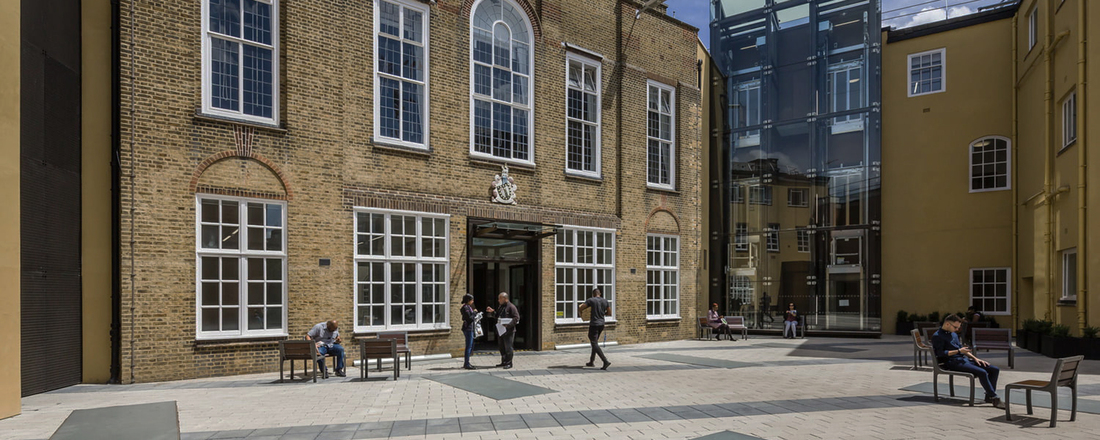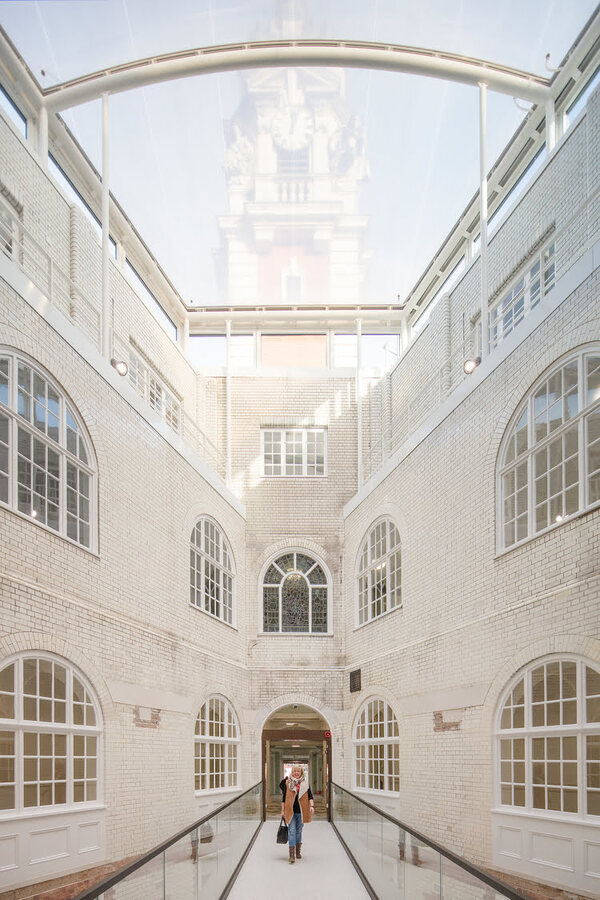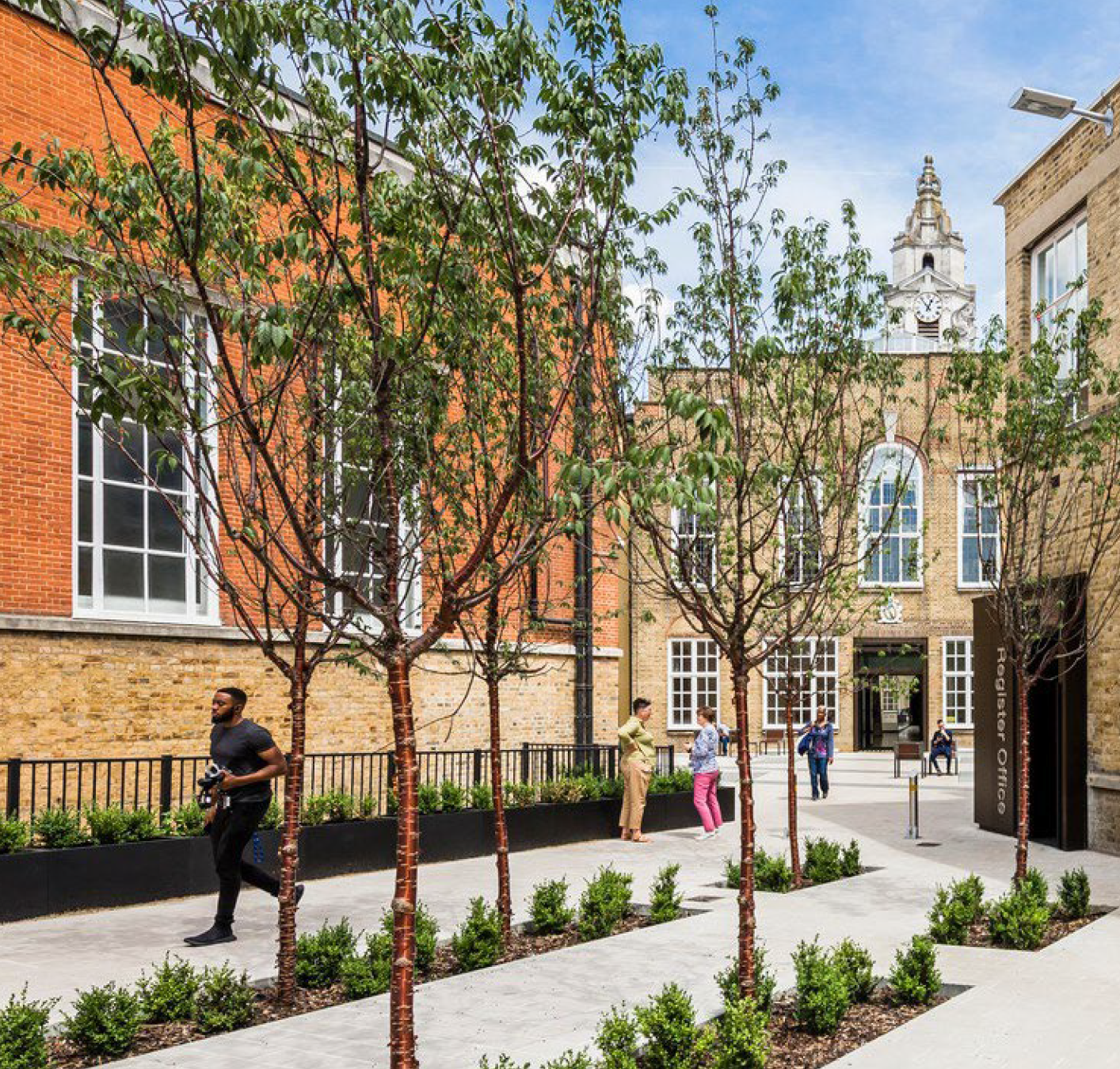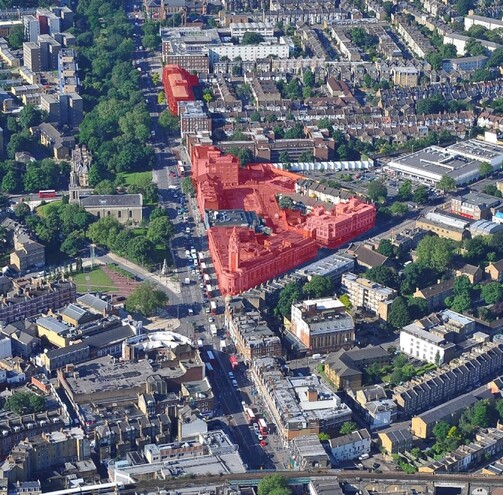Get updates from The Developer straight to your inbox Yes, please!
How do you develop a new town hall and civic hub in a context of mistrust?
“All you can do is listen,” says James Stockdale, Development Director at Muse, developer of Your New Town Hall in Brixton, the project to restore the Grade II-listed Lambeth town hall and create housing and modern workspaces for the council

“You’ve got to listen,” says James Stockdale, Development Director at Muse. We’re talking about Your New Town Hall in Brixton, the project to restore the Grade II-listed Lambeth town hall and create a modern workspace for the council. During an interview for The Developer Podcast, Stockdale tells me the project hinged on getting the community engaged and supportive. That was never going to be easy.
According to a 2013 resident’s survey, the council was not held in high regard. Among residents, people identified as Black Caribbean living in Lambeth ranked as those most dissatisfied with the local authority. Concerns included the loss of Black Caribbean spaces, the need for support for Black businesses, the lack of opportunities and services for young people, the lack of affordable housing and the poor management of housing and repairs. The report said residents felt “policymakers have stopped listening to them, and their culture and identity is gradually being lost.”
Not a great starting point for a major development project. “Regeneration is always going to be contentious. Buildings will get knocked down,” says Stockdale. “You’ve got to listen. And by doing that hopefully more people will be happier than not.”
“I actually registered my marriage at the town hall in a portacabin,” says Stockdale. “And it was leaking.”
Your New Town Hall rationalises the council offices, formerly spread across 14 buildings into two workspaces. The other sites were either developed into homes or into commercial space. “Our partnership ranged across five sites all located on Brixton Hill and Acre Lane, right in the heart of Brixton,” says Stockdale.
The developer appointed Cartwright Pickard architects to refubish and expand the Edwardian era Lambeth Town Hall, original designed by Septimus Warwick and H Austen Hall, and create a new Civic Centre. In addition to the Town Hall and Civic Centre, the project included the demolition of Somerset Place, an office building, replaced with housing and commercial space, the conversion of Art Deco department store Ivor House into housing and commercial space, internal works to a document storage building to provide cycle spaces and demolition of Olive Morris House council offices to create homes and the 13,000sq ft New Lambeth Council Archive.
“We’ve got a new civic office and service centre, we’ve preserved and enhanced the town hall, created a new cycle hub, changing facilities and a café, and 194 new homes for the borough.” The housing is 40% affordable, delivered in partnership with Notting Hill Genesis.
The project is not without controversy – mainly down to its cost and whether the project represented a prudent use of council funds. The original £50m budget was revealed to be closer to £104m in a Freedom of information request submitted in May 2017. In the FOI, the council revealed that sale of existing council premises as part of the project raised just £4.2m and that £66.2m would be drawn from the council’s cash balances, repayable with interest. The FOI also shows that some of the budget was expected to be made up from savings from the Housing Revenue Account – money earmarked for repairs to council homes.
Love what we do? Please consider supporting us as an organisation member or on Patreon to keep our content free, inclusive and challenging. www.patreon.com/thedeveloperuk
The council has said it expected to save £4.6m per year in running costs, but some have estimated far smaller savings. A report by The People’s Audit, comparing costs before and after development adjusted for inflation, has estimated running costs were reduced by as little as £1m per year, with a best-case annual saving of £2m based on 2020-2021 accounts. In response to the People’s Audit report, Green cllr Scott Ainslie told Brixton Buzz: “This money matters – it could be keeping libraries and youth services open and properly maintaining and refurbishing council homes, instead of demolishing them on Cressingham Gardens, Central Hill and other estates.”
The works have dramatically improved the quality of the workplace and civic spaces. Before its refurbishment, the Town Hall, built in 1908, had accrued temporary extensions, with compromised legibility and accessibility. “I actually registered my marriage at the town hall in a portacabin,” says Stockdale. “And it was leaking.”
Works included the creation of a new central atrium with an ETFE roof, a new public courtyard and Register Office, refurbishment of the council chamber, public assembly halls and committee rooms, and the creation of bookable meeting rooms and office spaces for start-ups in a new Enterprise Centre.
Upgrading the fabric of the listed town hall was a key challenge. “We couldn’t just apply a layer of insulation inside and out. We had to literally find all the air gaps and seal them to reduce air permeability. We also stripped the town hall of all services, down to the IT.”
As for the new civic centre, it’s rated BREEAM Excellent. There’s a new energy centre which provides heat and hot water to all but one of the new residential buildings (one was too far away) and chilled water to the office spaces and the new gym facilities. Taking time to teach residents and tenants how to use the system was key to its implementation.
As for listening to the community, acknowledging the memory and history of the place would prove important.
“One of the buildings we demolished and rebuilt as homes was Olive Morris house, named for a prominent activist, so we worked really closely with the Remembering Olive Collective to make sure we created some kind of commemoration around the building.”
Morris was a community leader, prominent activist for feminist and squatter’s rights, and a key organiser in the Black Women’s Movement in the UK. The Remembering Olive Collective administers an award in her name and stewards the Olive Morris Collection, held at Lambeth Archives, now located in the basement on the former site of Olive Morris House. The Collective makes sure the collection is intact and available to the public for research. On Remembering Olive’s website, they share the Collective’s disappointment when the new civic hub was not given Morris’ name and their work to ensure a foundation stone was laid her honour.
“We created a cornerstone to commemorate Olive. It was wonderful. We met members of her family, and it was really about reconnecting the community with the place,” says Stockdale.
It’s really important that you connect with everything that’s already there, the cultural assets that already exist
Another new building was named for Darcus Howe, the racial justice campaigner, British broadcaster, writer and chairman of the Notting Hill Carnival, who died in 2017.
“In the reception, we have his picture and a bio about Howe. It’s a wonderful experience to celebrate those people and what they did and what they mean to the people of Brixton and the community.“
Stockdale believes there is value in this act of reconnection, layering and embedding of history and culture into new developments. “You’ve got the red line of your project and it’s really important that you connect with everything that’s already there, the cultural assets that already exist.
“It doesn’t normally take much to sow that seed. We worked to really clear objectives, we listened a lot and we created a legacy – not just another building. Yes, this is a new neighbourhood and a new civic quarter, but it’s within a really well-established community and without their support, it would never have been successful.”
Sign up to The Developer Weekly email to find out when new episodes of The Developer Podcast go live. You can get episodes early and our magazine when you support our podcast on Patreon at www.patreon.com/thedeveloperuk
If you love what we do, support us
Ask your organisation to become a member, buy tickets to our events or support us on Patreon
Sign up to our newsletter
Get updates from The Developer straight to your inbox
Thanks to our organisation members
© Festival of Place - Tweak Ltd., 124 City Road, London, EC1V 2NX. Tel: 020 3326 7238



